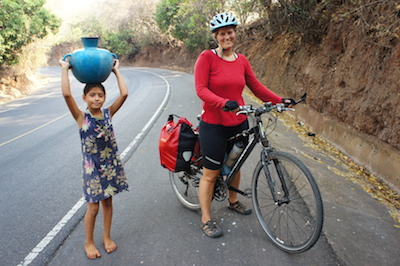
A Mini-Guidebook to Cycle Touring in Central America
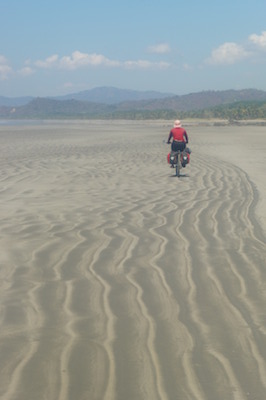
The Number One Question: Why?
This is often the first question we are asked, and perhaps the most difficult to answer. Why do we cycle tour? Why travel at all? Lots of books and articles have been written listing reasons to travel. The truth is that there are many reasons, but no particular reason at all is necessary. In other words, go out and explore the world, even if you don’t have a good “reason”. You are guaranteed to be rewarded, at least if you take your time, live in the moment, and keep an open mind and attitude.

Why travel to Central America? It’s an unbelievably dense region both culturally and geographically, with huge volcanoes jutting up through the clouds, looming above beautiful tropical beaches, a landscape that changes at a rate that is very much suited to cycling, so it is seldom boring for any length of time. The people are friendly, open, and lively, as in the rest of Latin America.
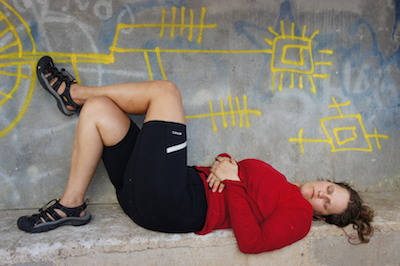
Finally, why cycle tour? Years ago, we traveled as backpackers, but since we started cycle touring, it is hard to imagine traveling any other way. Traveling by bike will give you the freedom to go where you want, force you to travel slowly, noticing the often gradual changes in scenery, culture, customs and food as well as keeping you physically active while on the road. One of the biggest advantages is that on a bicycle one is much more approachable. Consider that while traveling by motorized vehicle, there is a glass barrier between you and the country you are traveling in, and its inhabitants. You are unlikely to stop to chat with a local by the side of the road, whereas on a bike it simply requires a bit of pressure on the brakes.
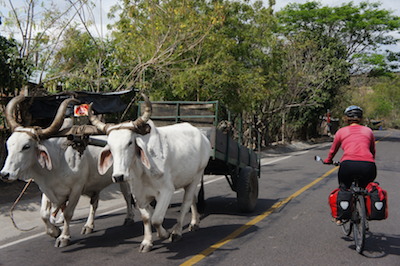
Roads: the Pan American Highway, and How to Avoid It
The Pan American Highway, despite the name, can at times be as quiet as a small country lane, although at other times it is a fast moving double lane freeway. We tried to avoid it when possible, and soon discovered that the smaller backroads tend to be more interesting. These can offer more varied scenery and grades, might pass through small villages, and in general provide a more enjoyable experience, although it could be a rougher and bumpier one. For some specific recommendations on roads, areas to go to, places to see etc., see our Route Notes.

Food: Rice and Chicken Every Day?!
Just like an army marches on its stomach, cycle-tourers certainly pedal on their stomachs. We were warned that Central American gastronomy does not rival the varied cuisine of Mexico or India, and this is true. However, we certainly dined well. Basic dishes based on rice, beans, chicken and beef are available all over, but each country and region has its specialties that are often much more interesting.
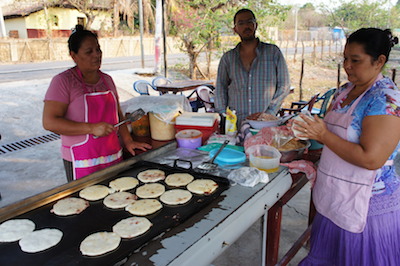
The range of flatbreads is astonishing, for example, in El Salvador, one cannot travel more than a few blocks in any town without hearing the incessant “tap, tap, tap” which signals that you are close to a pupuseria. A pupusa is a flat bread, usually made of corn flour, freshly sautéed with a filling of cheese, beans and pork or all of the above. After two and a half weeks of dining on pupusas every day, I could not look at a pupusa and feared I might start looking like one. In Honduras the baleada rules supreme, another flat bread with a filling, this time made from thin flour tortillas, freshly made, our favourite including a filling of avocado, grated white cheese and sour cream.
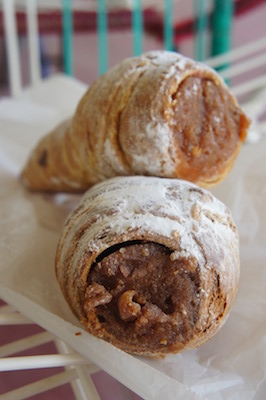
Near the coast we tried to eat fish and seafood often, devouring ceviche from the fish market in Panama City or roadside ceviche in Quepos, Costa Rica. In Belize, we camped in the yard of Denis and America, who fed us a dinner of the best fish we have ever eaten (and we have had lots!), caught by Denis that same day. Cycling along the Pacific Coast has another advantage: coconuts! We often drank two or more coconuts a day, freshly picked off palm trees by a helpful house owner on the side of the road, frequently refusing to charge us for them. Being chocolate lovers, in Belize we visited several small-scale chocolate factories, most of which were no larger than an average living room in a Vancouver apartment, and were using innovative methods, such as a cocoa grinder connected to a regular home drill. We were pleased to note that one of the factories was run by a traditional Maya family in the front of their home, taking the manufacturing back to its roots.
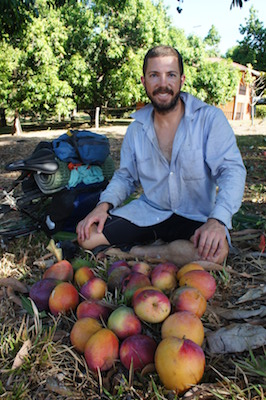
Fruit-hunting Galore
As passionate fruit lovers, we spent much time at markets or fruit stalls by the side of the road, devouring papayas, melons, watermelons, pineapples and at least a dozen types of mangoes, my favourite fruit. While riding through Panama we often ate a few papayas a day, but we kept on seeing mango trees and were dismayed to notice that the fruit was green and unripe. We kept on wondering: when will mango season finally start? When we entered Costa Rica, already at the border we noticed the abundance of mangoes and knew that our luck was about to change.
Water: To Drink or not to Drink?
In most third world countries, it is safe to assume that tap water is unsafe to drink, and this goes for most of the countries in Central America as well. We drank the tap water in Panama, Costa Rica and Belize. The rest of the time we used a water filter to filter tap water, or in many cases well water, whatever source was available. Once, in northern Costa Rica, while cycling a desolate section of the Pan American Highway, we were hungry and almost out of water and finally came upon a lone house. We cooked in the shade cast by their house and were thankful for the water from their rough hewn well, which had been drawn up with a cord connected to a dirty looking bucket.

North to South or South to North?
The age old joke is that riding north is harder since it entails going uphill, but this is of course untrue. We were surprised to find that most cyclists tend to ride south. For us it was simply a matter of noticing that Belize is typically a bit more comfortable in May than Panama, and we had no trouble going contrary to the trend. Over five months we met a total of only ten cycle-tourers, some of them on ambitious multi-year tours.
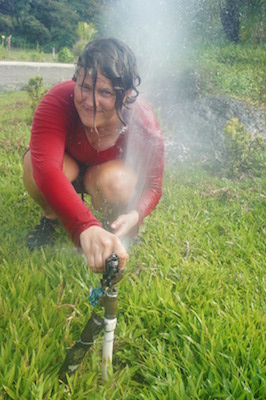
Weather: the Heat and How to Cope With It
The strong sun, lack of shade and the high temperatures can at times combine to make one feel as if in a furnace, at least during the period we traveled in the region, from January to June. Several times locals asked how we could ride in the heat. Indeed, it took some adjustment and we never quite acclimatized, but over time we learned a few tricks.
One of the fastest ways to get relief from the heat is to get wet. The methods for reaching this goal ranged from pulling up a bucket of water from a well and dunking it, to asking locals to use their hose, utilizing the occasional sprinkler and of course a swim in the ocean or nearby river, often alongside women doing their washing. Another great source of water for getting wet is gas stations, where we’d spray each other down to the amusement of the gas station workers. Against the strong sun, we wore long-sleeved cotton dress shirts, available cheaply at thrift stores. The advantages when riding in the heat and sun are many – the cotton stays wet for a long time, feels comfortable and cool, and the buttons allow ventilation when necessary.
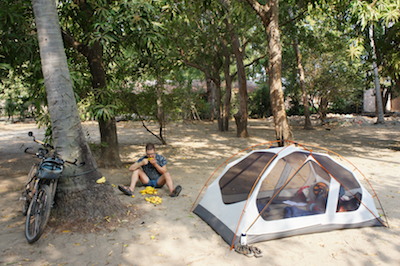
Accommodation: from Beach Camping to Sex Hotels
One of the advantages of carrying camping gear is that one is very flexible about where to sleep at night – no need to look for a hotel. However, in Central America we were surprised to find that most roadside land was fenced off. This still left us with the option of asking locals to sleep in their yard, or camp by a restaurant or hotel, which we often took advantage of. However, we soon learned the downside of camping – when it is very hot and humid, the fans in hotel rooms are literally a life saver, not to mention the TV (we became addicted to the Big Bang Theory on this trip). On one occasion we spent a night at a police station in El Salvador (a long story) and barely had a wink of sleep due to the hot and still air.
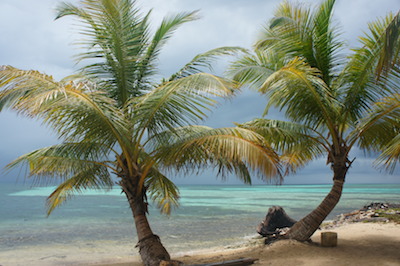
One of the surprises on the trip was the sex hotels, which are common all over Central America. These hotels often allow visitors to drive right up to their room and enter it without being seen. The rooms themselves often sport floor to ceiling mirrors, pink walls, special padded chairs, and toilet paper holders conveniently located right by the bed. It turns out that sex hotels are used not only for fleeting romances on the side, but also by regular couples who find it difficult to get a bit of privacy in a small crowded home. The one advantage of these rooms was that they were most popular by day, and therefore we often got the “noche completa” nighttime deal.
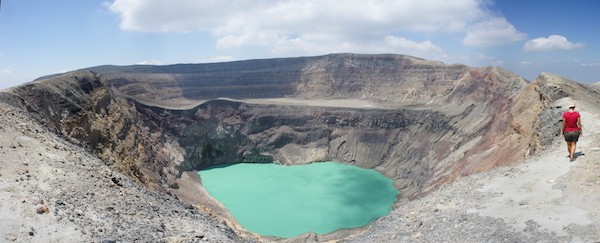
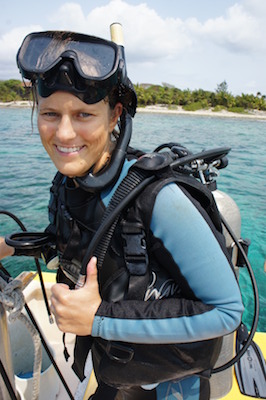
Other Activities: What to do When you Don’t Feel Like Cycling
Central America is blessed with plenty of opportunities for doing other interesting activities, aside from cycle touring. We took advantage of some of these, snorkelling on Isla Iguana in Panama, zip lining and rafting on the Rio Cangrejal in Honduras and taking surfing lessons from two kids in Santa Catalina, Panama. Although we managed a few hikes, such as up Volcán de Santa Ana in El Salvador, we found that cycling every day left us physically exhausted, and generally preferred to stick to more sedentary activities on our days “off”. In fact, we took a “vacation from the vacation” twice. During the first we took Spanish lessons in Granada, Nicaragua, and during the second we spent a week volunteering at a bilingual school in Cofradia, Honduras, and another week scuba diving on Útila in Honduras.
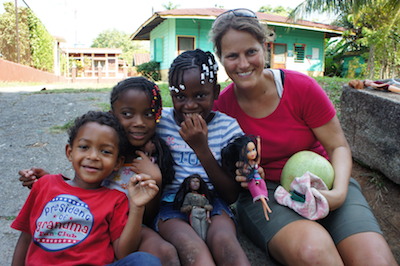
Language: Dónde Está el Baño?
Except for Belize, Spanish is the official language of all the countries in Central America. It is very worthwhile to learn some Spanish before you arrive, and it is an easy language to pick up. Although we suspect it would be easy to get around without any knowledge of Spanish, communicating with locals is half the fun, and most people don’t speak English (but rudimentary sign language can do the trick a lot of the time).

Safety: Did You Get Mugged?
Before the trip we were warned to be careful by many people who had never set foot in Central America, and even a few who had. A friend of a friend who grew up in Honduras even went so far as to recommend skipping the country completely since it was so dangerous. But the truth is that for the duration of our trip we felt as safe as we have felt anywhere in the world, including Canada. Yes, we took precautions and for the most part avoided wild camping, but by any standard, the biggest danger we were in was from traffic, which we minimized by seeking backroads and avoiding the traffic ridden highways, as well as the large cities. It seems that there is a misconception that Central America is riddled with crime and civil wars, but at least based on our experience, this information is outdated and mostly no longer relevant.
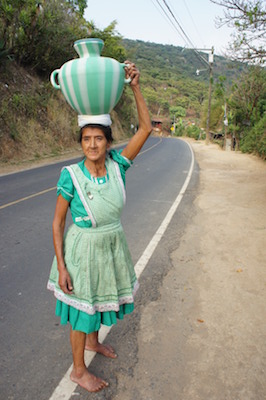
The Goodness of People
Many of our best experiences on the trip involved interactions with locals, such as a family in central Nicaragua that invited us into their home for a lunch of homemade cheese, tomatoes and rice, while they told us about their experiences in the Contra War of the 80’s. A few days before that, on a small country late, just before nightfall, we were searching for a place to camp for the night when we were offered an extra (empty) house by a farm owner. In southern Belize we camped right beside a traditional thatched Maya house. It was a cultural experience, but the people who hosted us found us fascinating too. They had never seen a tent and everyone, including the grandma, came to take a look. The kids passed the evening by playing inside the tent, having the time of their lives.
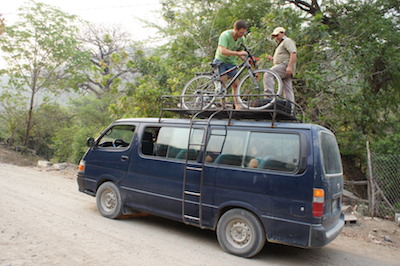
Alternative Transportation: AKA the Shortcut
In Guatemala, we had intended to take a certain backroad but asked around and were warned by several locals that is was dangerous. Finally, we resigned ourselves to riding along the highway instead, but when we got to it, we stopped in our tracks. It was a fast moving jam packed six lane highway with no shoulders. We sat down, wondering what to do, but when I approached a passing pick up driver to ask if we could pay him to take us up the road, he quickly agreed, and the problem was solved. Several times we put our bikes on buses for short journeys to bypass dangerous, boring or very steep uphill sections. Central Americans are used to carrying all manner of objects on buses, so forget the North American nonsense of having to dismantle your bike and box it for a Greyhound bus journey.
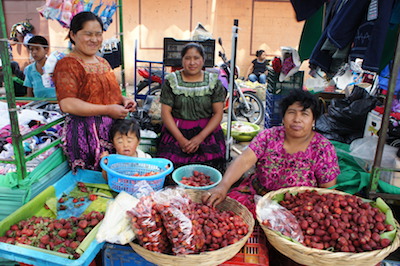
Costs: Surely You Must be Rich?
How much did our trip cost? We don’t really know… Friends of ours who traveled to Central America a year before us kept track of their daily costs, something we can’t envision doing, so we don’t have detailed information on this. However, cycle touring is generally a cheap way of traveling. There are no transportation costs beyond the flight (except occasional bike maintenance), so lodging and food are the main costs, but they are low in most third world countries (it’s all relative, though).
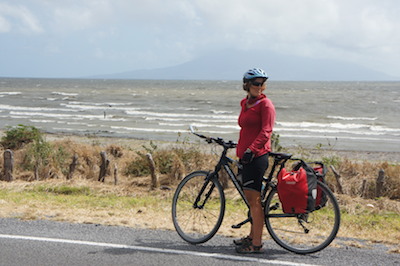
Generally, Panama, Costa Rica and Belize were more expensive than Guatemala, Nicaragua, Honduras and El Salvador. However, by eating where the locals eat (such as at the market), staying away from touristy places, and camping when in touristy places or near the beach, you can keep the costs down even in these more expensive countries. For example, in Santa Catalina in Panama a hotel room was around $40 per night, but we paid a hotel $5 per tent to camp on their open lawn overlooking the ocean, surrounded by beautiful coconut trees. The most expensive room we had was in Panama City, around $32. We didn’t have much luck with Couchsurfing or Warm Showers, mostly because getting to the hosts demanded long detours from where we wanted to go, and we didn’t have a schedule so it was hard to coordinate in advance, but your results may vary.


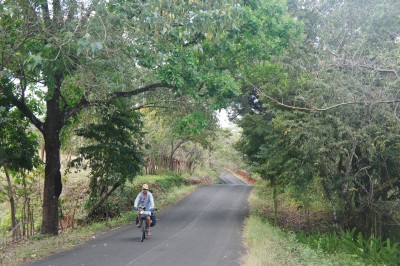
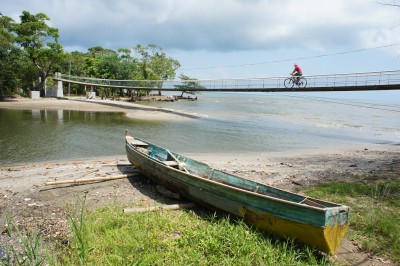
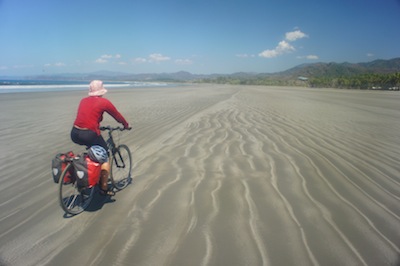
11 Comments
Peta Kaplan
Nice. Love the pic of the woman with the light green jug on her head in Guatemala and the very last landscape beach shot. Keep on biking. We are lazier and way prefer the motorbike which gets us zipping around (central Vietnam and Ometepe, Nicaragua), and allows us to snuggle while traveling. I’ve also been known to meditate into a sleep like state on the back of the bike and often do yoga stretches too. 🙂
Greenglobaltrek.blogspot.com
John Molineaux
Fascinating! I would love to see your routes and timetable. You must have seen a lot of rain that time of year?
Maya
We actually had almost no rain for five months… We thought that it would get rainier in Belize towards the end (since it was already May), but there was a drought that year and when it did rain it was mostly at night. In fact, we only used our rain jackets once, in Nicaragua, and it was mostly for the wind.
Ted Ho
Thanks for sharing your experience of such a marvelous tour. Love to hear about any future trips you may embark on.
Ole lorenzetti
I will add this to my bucket list! Send day by day agenda if available. Ole
tmurdock
Nice! I really enjoyed your post. I’d love to see your route too…
Gili
Thanks everyone for the comments! We didn’t really plan much in advance, but rather inspected the map daily and looked at a few trip reports on the way. Your comments have spurred me to finally start writing a blog post with route notes – it should be done within a few days (turns out I have lots to write). There will be a Google Map of the route as well as detailed notes on some sections and places we’d recommend (or not recommend!), but no day by day agenda or timetable.
Nomadic Justin
Great write up! I really enjoy your writing style and there are some photographic gems. I love that you two did this and that you are passionate about inspiring others to do the same.
I am doing the TransAmerica Trail this summer and writing it up at my blog, then who knows? Maybe a Central Amercian tour will be next! 😀
Thanks for such a great blog!
Geoff
Awesome adventure, thanks for sharing! I lived, or was stationed in Panama back in the early ’90’s. I loved it there and am totally jealous of you trip … I did a lot of running and some cycling while I lived there. I did a bunch of triathlons and ran in the transisthmian relay race every year – wish I had added a bike trip like yours to the list!
Gili
I finally wrote up some route notes for our route from Panama to Belize, including recommendations for roads, areas, towns, food, and general comments, by country, as well as an approximate Google Map for the route, enjoy: http://inmagicland.com/2014/03/central-america-route-notes/
Richard Jones
Beautiful photos and writing! Your food descriptions left me hungry. I hope you won’t mind a suggestion for future treks: I make a Convertible Backpack/Pannier system, and am trying hard to reach those who may want options on their tours. See: http://www.convertiblebackpacks.us
Thanks!